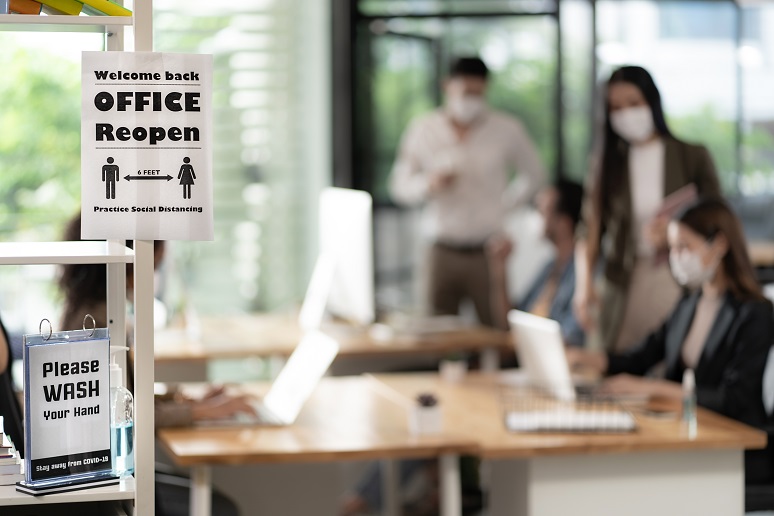Love them or hate them, video meetings have become a vital part of how we communicate during the pandemic. But with the prospect of returning to the office in 2021, workplaces and technology companies alike are now asking themselves: What role does video have in the future of work when some people are remote and others aren’t?
Videoconferencing provider Zoom was one of the many cloud companies whose technology assisted in the move to a fully remote workstyle. Now Zoom aims to do the reverse, bolstering its in-office software-based Zoom Rooms system with
features suitable for a post-pandemic, hybrid workplace.
Zoom designed the new features to make workers feel more comfortable, in control, and productive when they return to the office — starting in the lobby, Jeff Smith, head of Zoom Rooms at Zoom, said in a briefing about the announcement. With Zoom Room’s
virtual receptionist/kiosk mode, announced last November and now available, an organization can create a safe, contactless way to check guests and workers in and out, he said. To enable contactless entry, an IT admin can customize the “Start Meeting” button on a Zoom Rooms for Touch device to connect lobby visitors with a receptionist, Zoom said.
Moving to the meeting room itself, data available from within the environment will be crucial in assuring a safe return to the office, Smith said. Toward that end, Zoom is leveraging environmental data gathered from sensors on the Neat Bar, a Zoom-certified video room appliance, to allow organizations to monitor levels of carbon dioxide and volatile organic compounds within their meeting rooms. The data is viewable from within the Zoom dashboard, the video controller within the room, and room scheduling displays, Zoom said. Similarly, via supported cameras, Zoom is delivering real-time occupancy data for viewing via the dashboard and scheduling displays.
Separately, for collaboration and brainstorming, users can now send Zoom Rooms for Touch whiteboard sessions to Zoom Chat or emails. With this capability, workers can take shared whiteboard sessions outside the meeting room, for viewing while working remotely, Smith said.
Though “hybrid” is the workplace word of the day, organizations really are on a spectrum, with one end being fully remote and the other fully in-office, Smith said. At the same time, some companies have a clear vision for their hybrid futures, while others need help and are unsure what their next step should be, he added.
Regardless, rethinking the in-office experience from a hybrid lens is part and parcel of today’s IT, HR, and real estate/facilities job roles. All must understand how to employ technology and
glean usable data from the environment to do their part in ensuring a safe — and productive — return to the office.






